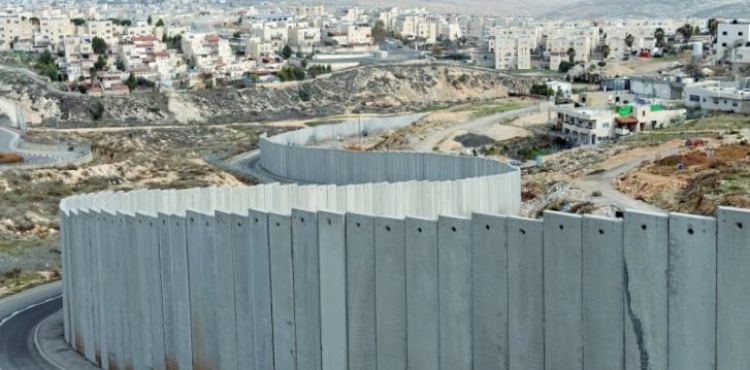Many human rights organizations have confirmed that what is being carried out on the ground in terms of a very dangerous settlement reality, and not only by establishing settlements and outposts and the means they need to provide them with all the capabilities, including huge bypass streets and tunnels. It is not only at the expense of the Palestinian lands, but also the occupation government began planning to sever the West Bank from one another, and perhaps this would turn into a project to create isolated cantons if necessary, as the plan is preserved in Israeli drawers according to many human rights organizations.
A report issued by the "Freedom News" human rights organization said: The Israeli occupation has begun implementing a new apartheid project that opens the way for settlement in the E1 area of ​​the West Bank, based on numerous reports that indicated that the occupation government agreed last week to allocate 14 One million shekels to complete plans to allow work to begin on the road named "The Sovereignty Road", as part of the construction plan for the settlement project known as "E1" in East Jerusalem.
The approval came during a meeting with the participation of the Israeli Prime Minister Benjamin Netanyahu, the Israeli Minister of Transportation Bezalel Smotrich, the Israeli Finance Minister Yisrael Katz and the head of the municipality of "Ma´ale Adumim."
Project details
According to the report, according to the settlement project, the northern entrance to al-Eizariya will be closed, and the al-Zaeem checkpoint will be moved towards the “Mishor Adumim” settlement, according to the plan.
As a result, the settlement of "Ma´ale Adumim" is separated from the Palestinian space by means of the wall. Consequently, there will be no need for the checkpoint present at the Zaim checkpoint, which will move east so that the settlers of "Ma´ale Adumim" will not have to pass through it on their way to Jerusalem. Palestinians can reach Al-Eizariya from its northern entrance at the aforementioned settlement roundabout.
The entrance to al-Eizariya will be closed by the wall, and the current road will be designated for residents of “Ma´ale Adumim” settlement only. A road and a tunnel will be built from al-Zaim towards al-Eizariya and Abu Dis.
Cut off the bank
This project, which was approved by the former Minister of the Occupation Army, Naftali Bennett, in March of last year, is a decisive step for separating the southern West Bank from its center, on the one hand, and for unleashing settlement in the area called "E1", on the other hand.
The danger of this project is that the Palestinians will not be able to use the Road No. 1 that connects the southern West Bank with its center and the north, with the completion of the new road route adjacent to the populated areas north of the town of Eizariya, east of Jerusalem.
This also paves the way to isolate the area called "E1", and creates a physical connection between the settlement of "Ma´ale Adumim" in the east and the city of Jerusalem in the west.
Movement between the two settlements will be via two vital roads, one linking the settlement to Jericho and the Jordan Valley, and the other linking it to Jerusalem a few kilometers to the west.
Apartheid
According to the description of human rights organizations, the occupying state is an apartheid state, whereby the Israeli regime has divided the lands extending between the river and the sea into different units that are distinguished from each other in the way it controls them and defines the rights of its Palestinian residents.
The organizations indicated that the continuous geographical space for the Jews is for the Palestinians a mosaic space made up of different pieces.
While the occupation allocates to the residents of each of these isolated units a package of rights that differ from those allocated to residents of other units, all of which are deficient in comparison to the package of rights granted to the Jews.
A report issued by the Applied Research Institute "ARIJ" said that Israel has succeeded in imposing the illegal settlement presence in the West Bank to a large extent since the Oslo Agreement, specifically in the Palestinian governorates that are of strategic importance to Israel. Eleven governorates are more than the Palestinian urban area, which are the governorates of Jerusalem, Jericho, Al Aghwar, Qalqilya, Salfit and Tubas.
By going back to the year 1991, when the so-called Israeli "Civil Administration" determined structural plans for Israeli settlements in the West Bank, including Jerusalem, to be areas of Israeli expansion and construction, it became clear that the areas specified for these settlements exceed those of the Palestinians in 8 of the 11 governorates in total. The year.












